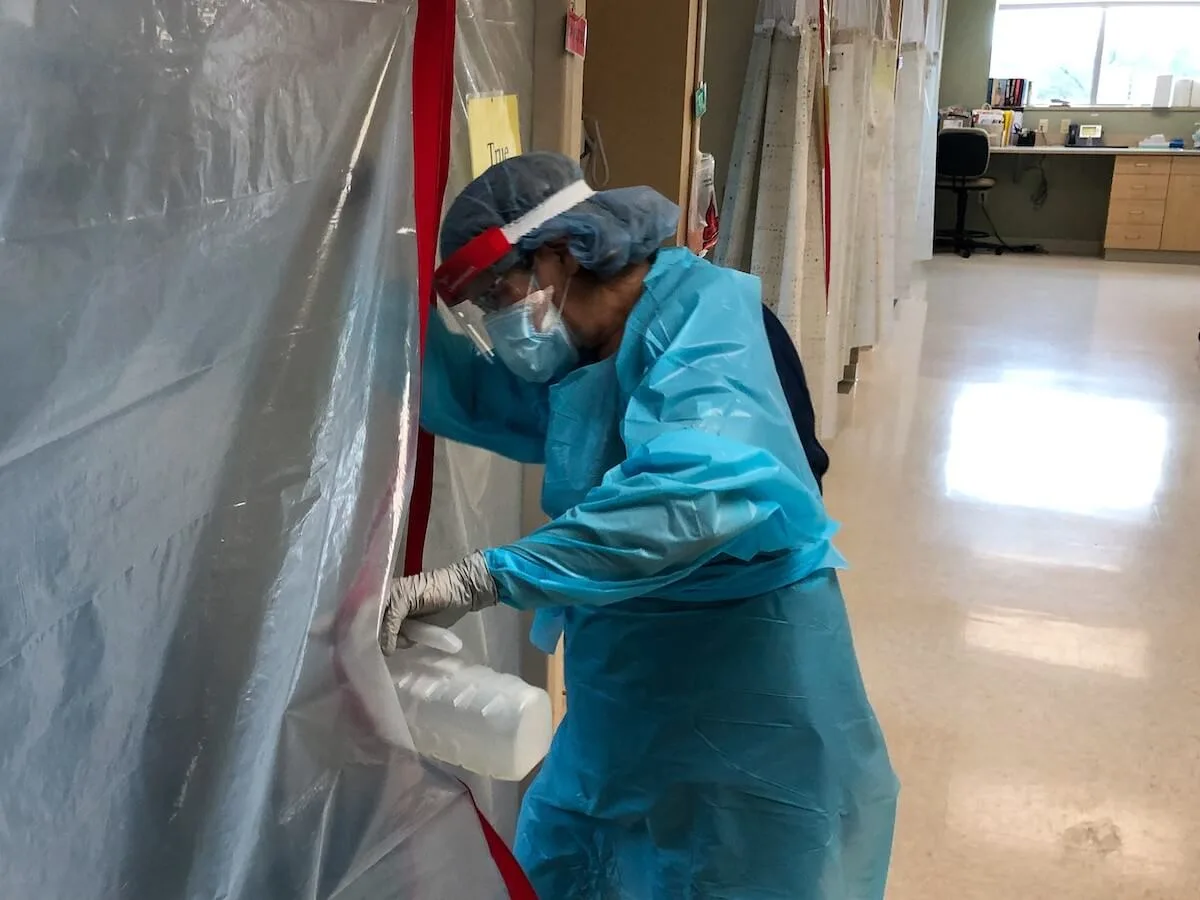
#image_title
#image_title
Dr. Ryan Westergaard reflects on how pandemic politics by some got in the way of saving lives.
Two years ago this week, the COVID-19 pandemic was beginning to spread like wildfire in Wisconsin.
At the time, the state’s death toll was four. More than 12,000 others in Wisconsin couldn’t have possibly known they wouldn’t live to see the end of the virus’ reign, and many of the nearly 1.4 million more infected with the virus likely thought they would not have to fight off the sickness. Now, nearly 1 million Americans have died of the virus and more than 6 million people have died around the world.
And it wasn’t just the general public that was coming to grips with the speed of illness and death.
“This is worse than our worst-case scenario when we were planning back then—what happened,” said Dr. Ryan Westergaard, chief medical officer with the Wisconsin Department of Health Services (DHS) in an interview with UpNorthNews. “It’s been a really tragic and traumatic couple of years in that regard, because we’ve always felt that we have the tools to slow it down and stop it, but in the end, we weren’t successful.”
As Wisconsin’s top infectious disease expert, Westergaard had been monitoring COVID-19 as it spread in China well before it reached the Badger State, and he felt ready once it finally arrived on Feb. 6, 2020, when the first case was identified in Dane County.
But with the gradual realization that COVID-19 could not be outright stopped, and with the constant political bickering ranging from more severe measures like shutdowns of most businesses to the simple act of wearing a mask, health experts’ worst fears were realized.

Amid national pushback, mostly from Republicans, against COVID-19 safety orders, conservative justices on the Wisconsin Supreme Court stripped Gov. Tony Evers’ administration of its ability to enact wide-ranging statewide safeguards in May 2020, leaving a patchwork of local rules across the state.
Republican lawmakers and conservative courts continued to erode state and local health officials’ authority to control outbreaks—rulings that will have an impact on any future pandemics.
“The fact that the political discourse became so amplified and so animated really, I think, decreased the ability for public health to have those kinds of thoughtful conversations with people in communities that we’d like to,” Westergaard said. “It became a lot of arguing and yelling, unfortunately.”
COVID vaccines miraculously arrived in December 2020, faster than expected. By April 2021, hundreds of thousands of Wisconsinites were receiving vaccine doses each week.
Soon, new cases fell off. Briefly, Wisconsin was averaging zero deaths per day from the virus during the summer. It seemed as though COVID-19 had been defeated.
But the Delta variant came along, causing some breakthrough infections among people who had been vaccinated. The virus mutated further, producing the hyper-contagious Omicron variant that reached Wisconsin in December. By late January, an average of more than 18,000 people were testing positive for the virus every day.
The Omicron surge has subsided, and new case numbers are back down to levels not seen since last summer. According to DHS data, about 60% of Wisconsinites are fully vaccinated against COVID-19, and the unvaccinated who got infected have some level of protection against reinfection (although, not as strong a defense as a vaccinated person).
Where the pandemic goes from here is unclear. The few remaining COVID precautions are beginning to ease or lift, even federal guidance like mask recommendations.
Westergaard said the chances “are very, very low” that further variants will not crop up down the line, and that it is likely COVID-19 will either become something of a seasonal phenomenon akin to the flu or something that surges seemingly at random.
“Time will tell, but I think the safe thing to say is that we’re going to be dealing with COVID for a while yet,” Westergaard said.
He takes solace in the knowledge that early attention with an emphasis on prevention kept Wisconsin hospitals from being further strained by illness and death as was seen in hospitals on the east and west coasts in those early weeks of the pandemic.
“We clearly saved a lot of lives,” Westergaard said. “And I would say that vaccination is our strongest tool, but the prevention, I’m convinced—I continue to believe that our local prevention efforts about wearing masks and about contact tracing and quarantining, these saved many, many lives.”
Politics

Biden makes 4 million more workers eligible for overtime pay
The Biden administration announced a new rule Tuesday to expand overtime pay for around 4 million lower-paid salaried employees nationwide. The...

Biden administration bans noncompete clauses for workers
The Federal Trade Commission (FTC) voted on Tuesday to ban noncompete agreements—those pesky clauses that employers often force their workers to...
Local News

Readers Poll: Top Bowling Alleys in Wisconsin
Looking for the best bowling in Wisconsin? Look no further! Our readers have spoken in our recent poll, and we have the inside scoop on the top...

8 Wisconsin restaurants Top Chef judges are raving about
Top Chef’s 21st season is all about Wisconsin, and on-screen, it’s already apparent that the judges feel right at home here. But, while filming in...




